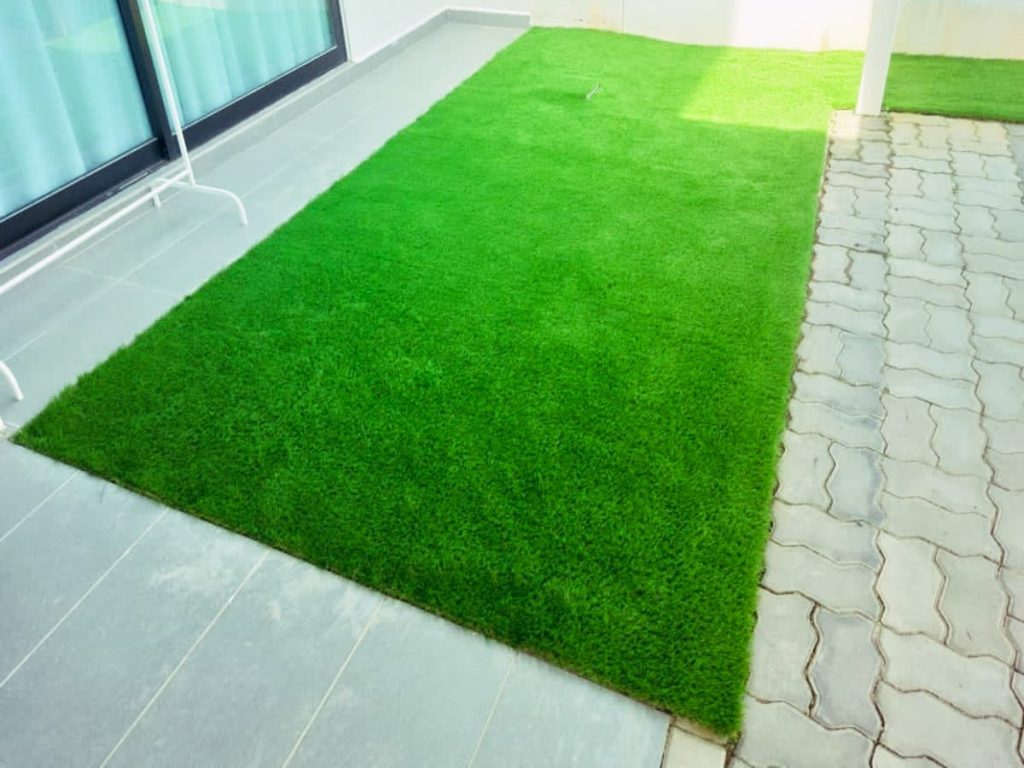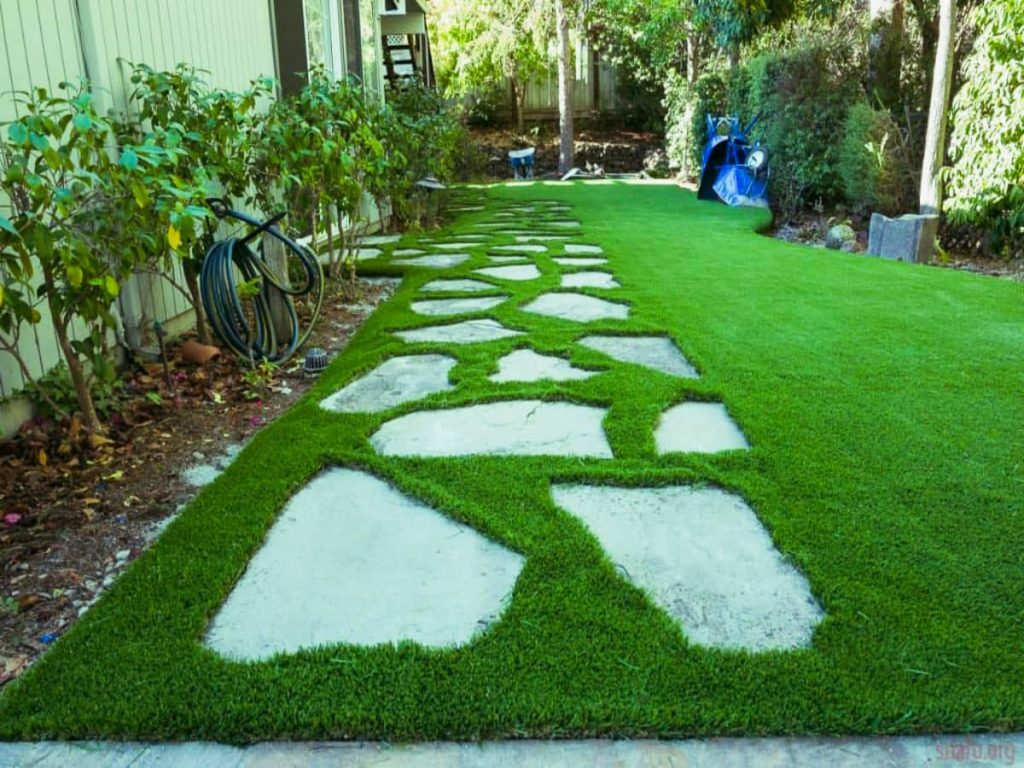
The Artificial Green Carpet Redefining Sustainable Luxury
With increasing environmental awareness, the concept of sustainability has evolved from a niche idea to a common theme in nearly every sector. Starting from the kinds of garments people use to the automobiles people use for transport and even the food that people take, sustainability is now a standard factor to consider. This paradigm shift has extended to events like film premieres, fashion shows, and award ceremonies, with a new trend emerging the Artificial Green Carpet.
Whereas the conventional red carpet is renowned for glamor and celebrity. The Green Carpet moves environmental responsibility to the center stage of big events. Such a change does not downplay the beauty of such occasions but only tries to redefine luxury through a sustainable and responsible practice. The world wants to understand the Green Carpet movement, its significance, and how it is influencing various sectors, including fashion and the film industry.
What is the Artificial Green Carpet?
The term Artificial Green Carpet means a sustainable event to includes the usage of the Artificial green carpet. The clothes of the guests and celebrities, and the green policies are in the background. In the past, people associated the red carpet with glamor and celebrities, however, with growing concern about the effects of climate change and environmental issues, reconsideration of large-scale ceremonies became necessary.
As a green product, it is the intention of Green Carpet to minimize the environmental impact of events that formally produce massive waste and emissions. Starting from the use of recycled materials for fashion shows and do-no-harm policies on food and drinks. The Artificial Green Carpet is all about giving a positive message to the world without losing the glitz and sophistication of these events.
The prevailing and most recent form of activism: The Artificial Green Carpet Movement
The Artificial Green Carpet movement started to grow as people began to experience an awareness of their ecological footprint. To a great extent, in the fashion industry, sustainability emerged as a key focus as brands started to face criticism and severe scrutiny for their part in polluting the planet, unfair treatment of workers and laborers, and encouraging the overuse of resources.
Perhaps one of the best-known uses of the Artificial Green Carpet is the Green Carpet Fashion Awards. Which launched in 2017 during Milan Fashion Week. Hosted by Camera Nazionale Della Mode Italian and Eco-Age the initiative aims to single out brands and designers. Who already implement environmental ideas in their activity. Through this public awareness event, emphasis on addressing environmentalism usage in building and fashion technologies has received a significant impact.

The Green Carpet Fashion Awards rely on cute Vogue values to talk about sustainability. Whenever major celebrities walk the Artificial Green Carpet in sustainably sourced or recycled materials. Millions around the world have discovered that luxury can exist without harming the environment. This has led to a rise in events and fashion that encourage people to be more selective about what they wear and use.
Why is the Artificial Green Carpet Important?
Thus, the primary consideration for the Artificial Green Carpet is the possibility of its contribution to the achievement of sustainable development goals. Consequently, as climate change affects massive sectors, the need to embrace environmentally conscious practices increases. The Artificial Green Carpet within CS becomes an important component of the efforts to minimize the carbon impacts of construction, manufacturing, and everyday practices in the same manner.
Here’s why the Artificial Green Carpet is important:
Environmental Protection
Manufacturers produce authentic carpets from man-made fibers derived from petroleum by-products, such as nylon, polyester, and acrylic fabrics. They inevitably emit pollutants into the surroundings, pollute the environment, and demand a lot of carbon credits. However, Artificial Green Carpets contain natural or recycled materials. Which have a better bearing on the health of the ecosystem as compared to other Carpets.
Health Benefits
Traditional carpets emit VOCs into the indoor environment, worsening the indoor climate and causing respiratory problems, headaches, and other health complications. In contrast, manufacturers construct Artificial Green Carpets from materials that either release no VOCs or release them at levels considered safe for use. This makes the indoor environment of homes, offices, and event shelters healthier for the occupants and those attending the events.
Energy Efficiency
When carpets are environmentally friendly—that is, made from recycled materials or renewable resources—they likely consume less energy compared to ordinary carpets. Further, We also serve the function of saving materials by recycling products to avoid going to the dump and decreasing the call for new raw materials.
The two values that dominated all the rest are aesthetic and functional values.
Apart from being environmentally friendly, Artificial Green Carpets are fashionable and can fit any design requirements. New demands appear and designers and manufacturers offer more choices that will suit certain preferences and uses. Artificial Green Carpets are available as carpets for homes, offices, or for specific occasions because they are environment friendly but well styled.
This change of discoloration has been referred to as the Artificial Green Carpet Revolution in Interior Design
Recently, people have been paying much attention to environmentally friendly home decoration. Green Carpets are among the most popular green solutions. Contemporary homeowners are no longer concerned only with aesthetics and comfort in their living spaces. They now prioritize ensuring that their homes are ‘green’ as well.
Sustainable Materials
Producers create Green Carpets using various materials and techniques while considering the principles of green carpeting. Popular options include:
- Wool: Renewable resource that is strong, tough, and biodegradable vegetable fiber. That is why wool carpets possess a natural ability to insulate hence lowering energy consumption within a given home.
- Cotton: Another natural and biodegradable fiber that gives softness and comfort to the touch than that of synthetics is cotton.
- Jute: Jute is biodegradable and comes from natural plant fibers, providing a raw and earthy look through its texture, feel, and general appearance.
- Recycled PET: Manufacturers use recycling techniques to produce carpets from plastic bottles that are both durable and sustainable.
Non-toxic dyes and Adhesives
Manufacturers often dye Artificial Green Carpets using non-toxic or low-impact dyes to minimize the risk of chemicals leaking into the environment and polluting the air. Likewise, manufacturers are extending natural POWDER adhesives and backings while eliminating toluene and other dangerous chemicals in common carpets.

Durability and Longevity
Investing in an Artificial Green Carpet does not necessarily mean that one has to compromise on carpet durability. In fact, most organic carpets last for a long time; instead of replacing carpets every year and contributing to resource depletion, one can use them for three or more years. The production of natural fibers such as wool is extraordinarily durable and products made from natural fibers, if well taken care of, can last for many years.
A Growing Trend
Since sustainability has become fashionable, we can observe that the Green Carpet trend in interior design is expanding rapidly. Everyone who designs a house, apartment, office, store, or any other premises is interested in incorporating elements of environmentally friendly design. This has in turn increased consumption and has caused improvements, resulting in Green Carpet that is affordable yet classy.
The Five Basics of Carpet Environment
When organizing a green carpet event, it is not just about changing the color of the carpet to red. It encompasses a holistic sustainable development perspective that embraces a vast number of measures of environmental friendliness. Let’s take a closer look at some of the key components of a successful Green Carpet event:
Sustainable Fashion Choices
If there is one aspect of the Artificial Green Carpet that receives the most publicity, it is sustainability in fashion. Eco clothes are gradually becoming more popular, with designers and celebrities wearing or endorsing clothes with components of organic fabric, recycled materials, or biodegradable material. Ethical fashion brands are getting more recognition, and P2P markets or second-hand clothing has become a popularity among celebrities.
For instance, instead of using traditional materials like polyester or leather, sustainable fashion designers such as Prada employ organic cotton, bamboo, and others by recycling plastic. Most celebrities now choose to wear outfits made from recycled fabrics or garments from past events to show the world that fast fashion is out of trend.
Eco-Friendly Venue Selection
Location is crucial in decision-making for a Green Carpet event. Venues should adopt energy-efficient lighting, conserve water, and recycle to minimize waste. More and more activities take place in LEED (Leadership in Energy and Environmental Design) certified buildings. Because we prove that construction was done sustainably.
Some events have even gone for parked areas that do not need much lighting and temperature regulation. Of course, it is also possible to go even further, holding Green Carpet events in venues situated near public transport or having an electric vehicle charging point.
Sustainable Foods and Climate-Neutral Concepts
Food and beverage service is another strength of the program, as demonstrated at the Artificial Green Carpet. They also serve locally sourced, free-range organic, and plant-based meals. Catering typically has negative impacts on the environment. Energy consumption in food production and the distance food travels from farm to table are directly related to food miles. Therefore, choosing locally produced and seasonal foods is an effective way to reduce the carbon footprint.
Additionally, most Green Carpet events adopt a no-waste catering approach by using compostable containers. Eliminating single-use plastics, and donating or composting leftover food instead of discarding it.
Artificial Green Carpet Mobility Strategies
Overall, transport-related pollutants are typically the largest contributor to emissions for any event, affecting both attendees and staff who travel long distances. To address this issue, Green Carpet event promoters insist on the use of electric or hybrid cars, carpooling, or public means of transport. Some events sponsor cars from electric car manufacturers as a means of orderly transportation for dignitaries. Others encourage the use of ride-sharing applications or carbon-neutral travel for guests flying to the event location.
Waste Reduction and Recycling
The ornaments used, devices put in place, and consumables used during traditional events produce a significant amount of waste. This is a fight for sustainability that the Artificial Green Carpet states clearly with a focus on waste and recycling. This can range from the invitations and programmers to the tables and cutleries. Most events use decorations and sets made from recyclable or reusable materials to decrease landfill waste.

The Future of the Artificial Green Carpet Movement
The Artificial Green Carpet movement is expected to grow due to expanding environmental problems. In the next few years, more people will push for sustainability, especially at large and prominent events. Which makes returning to sustainable sources the norm rather than the exception. The entertainment industry could be a powerful tool for trendsetters to influence global perceptions and behavior.
Recognizable brands such as the Oscars, Met Gala, and Cannes Film Festival have started considering green practices making the Green Carpet the new standard. Sustainability is now a priority for celebrities, designers, and event planners, and this trend will only grow. Bey Men shows that luxury can align with environmentalism through the Artificial Green Carpet. As more people embrace sustainability, the Green Carpet could redefine style and progressiveness in the 21st century.
Tips For Embracing the Artificial Green Carpet in Your Life
It is not complicated now to follow the Artificial Green Carpet lifestyle. Whether you want to make your home more sustainable or planning an eco-friendly event. Here are some practical tips to help you embrace the green carpet movement:
- Use Natural or Recycled Material for Forharden: Preferred types of carpets and rugs include those that are made from natural fibers such as wool, cotton, jute, or bamboo. In the absence of natural fiber, try to find manufactured from recycled material, for instance, PET from the bottles.
- Check for Certifications: Look for certifications like the Carpet and Rug Institute’s Green Label Plus, which tests for low VOC emissions, and the Cradle to Cradle system. Ensuring products are eco-friendly and can be remanufactured after use.
- Consider the Entire Lifecycle: However, when considering a carpet, consider the lifetime of the carpet from its manufacturing process to its removal.
- Support Green Businesses: Take extra time to consider precisely what you’re consuming and attempt to purchase locally produced products from businesses that support sustainability in their operations. Most carpet makers have embraced eco-friendly approaches, energy efficiency, and green production standards.
Final Thoughts
The Artificial Green Carpet movement also means a change in attitude to events, television programs, and shows. This reflects the new generation’s values, with sustainability at the core of operations. The good news for large-scale events: people can enjoy exciting shows while also helping to save the planet.
In general, the Artificial Green Carpet has grown more popular year by year. So it is possible to state that sustainability and glamor are not opposites. The Green Carpet highlights eco-friendly celebrations, from minimizing fashion waste to promoting sustainable event spaces and waste reduction. The future is green and the Artificial Green Carpet Show is ahead of all the others.